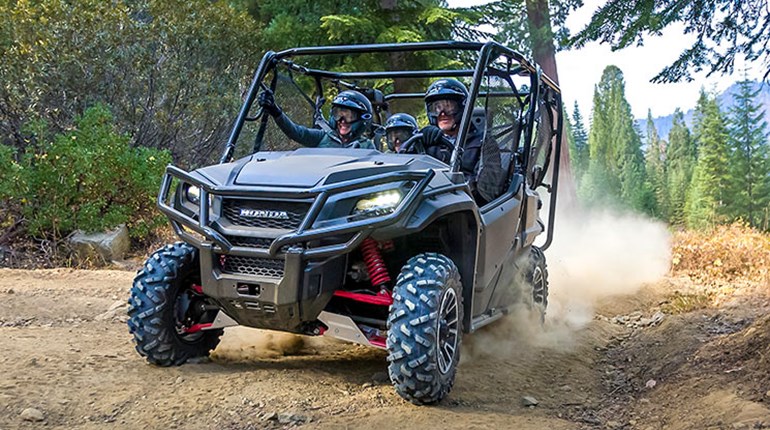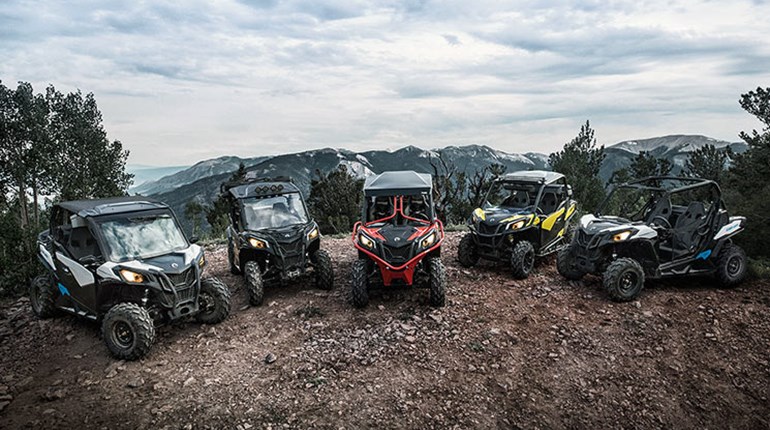
Kawasaki introduced its Mule off-highway-vehicle (OHV) in 1988, and has refined the unit ever since. In 2005, the company introduced the six-occupant Mule 3010 Trans 4x4, and that vehicle won American Hunter’s Golden Bullseye Award for Vehicle of the Year. Last year Kawasaki added more torque to its workhorse, and released a Mule Pro powered by an all-new 993cc diesel engine that delivers consistent high-value torque along its performance curve, along with improved utility and enhanced functionality. The engine enables hunters who already employ a fleet of diesel-powered equipment to choose a Kawasaki diesel-powered OHV, thus making fuel storage on a farm or ranch simpler.
The Mule Pro was designed from the ground up as a totally new OHV. This includes the chassis around which the vehicle is built, the diesel engine and a re-engineered continuously variable transmission (CVT) with enhancements that improve performance under specific operating conditions. The diesel Mule Pro is capable of top speeds of 30-plus mph. Engineered to haul 1,616 pounds of passengers and cargo, it is equipped with a 2-inch receiver hitch that enables the vehicle to tow 2,000 pounds above and beyond the maximum rated weight of passengers and cargo. Fuel tank capacity is 7.9 gallons.
The 993cc, three-cylinder, four-cycle diesel engine features four valves per cylinder. Fuel is injected to each cylinder via a Bosch mechanical-injection pump. Torque is rated at 38.3 lb.-ft. at 2,400 rpm. An engine-block heater facilitates starting in severe cold. The CVT is enhanced with specifically designed and placed weights and clutches that permit the operator to take full advantage of engine braking under sustained downgrade operating conditions. Dual-disc braking front and rear is standard, and electric power steering (EPS) is available as an upgrade.
A full complement of digital instrumentation displays vehicle speed, the status of engine performance, the position of the gear selectors, any warning lights that should appear, fuel level and engine coolant temperature.
Two models are available, the Mule Pro-DX and the Mule Pro-DXT. The difference between the two is based on the number of passengers each can transport.
The Mule Pro-DX can transport three adults with its single cockpit bench seat. Its steel-lined cargo bed measures 54.1x53.3x11 inches. The bed tilts via a pneumatic strut (or optional electric power assist), permitting the dumping of bulk cargo.
The Mule Pro-DXT’s steel-lined cargo bed embraces the same dump technology. However, the total number of passengers it can carry and its adjustable seating set it apart from the DX. It features a second theater-style rear (foldable) bench seat that remains hidden and out of sight (tucked below the bed) when transporting no more than three occupants. In this three-passenger configuration, the cargo bed is full-size. If seating requirements change, the DXT can quickly be reconfigured to accommodate six occupants by sliding the front wall of the cargo bed aft to expose the additional bench seat. Three- or six-occupant accommodation is completed in a matter of minutes.
When configured to transport three passengers, the DXT cargo bed measures 42.7x53.7x11 inches, and is rated to haul up to 1,000 pounds. When configured to accommodate six occupants, the DXT bed measures 22x53.7x11 inches, with a smaller cargo-hauling capability. In the six-passenger configuration the cargo bed is rated to carry 350 pounds. When the rear bench seat is folded open for passenger use, or folded down and out of the way to create a larger cargo bed, the three-occupant cockpit seat is not impacted in any way.
The chassis features carbon steel tubular structural members that are cut with computer-driven precision laser equipment, then attached and integrated with assorted fixed components into a single modular unit using computer-controlled robotic welders. The independent front and rear suspension incorporates dual-wishbone arms paired with coil-over shocks. Ground clearance is 10.4 inches. Wheel travel is 8.7 inches front and rear. The 12-inch wheels measure 26x9.5 inches up front and 26x11 in back.
A plethora of accessories can be paired with each unit. Kawasaki dealers provide a variety of front blades for snow or earth moving; a Warn winch; rear storage box; hard-cab and soft-cab enclosures; and more. Available colors include black, green and red. The base MSRP of the DX and the DXT are $13,199 and $14,199, respectively; the DX equipped with EPS is $13,999.
Technical Specifications:
• Drivetrain: 993cc three-cylinder, four-stroke, OHV, fuel-injected, liquid-cooled diesel engine w/ 38.3 lb.-ft. torque @2,400 rpm; CVT w/high, low, neutral, reverse, engine braking; 4WD
• Suspension: double-wishbone front/rear w/8.7" wheel travel
• Brakes: dual discs front/rear
• Dimensions/Capacities: overall length 133.3"; width 64"; height 77.4"; wheelbase 92.3"; ground clearance 10.4"; curb weight 1,808.1 lbs.; towing 2,000 lbs.; payload 1,616 lbs.; fuel 7.9 gals.
• MSRP: $13,199



































